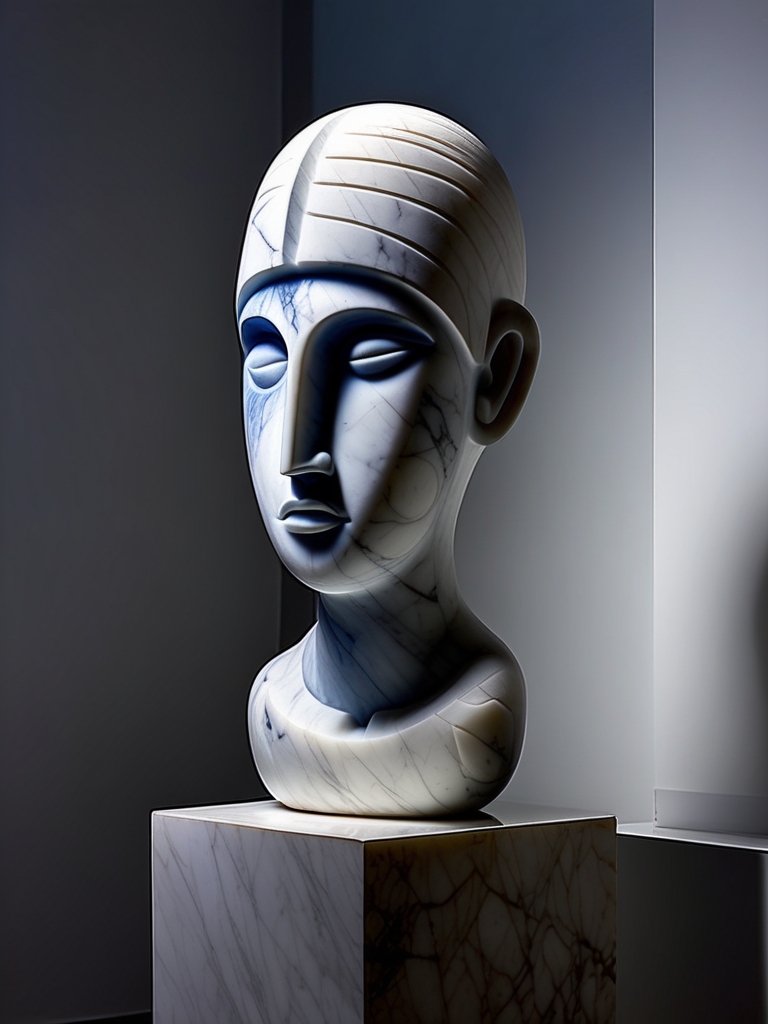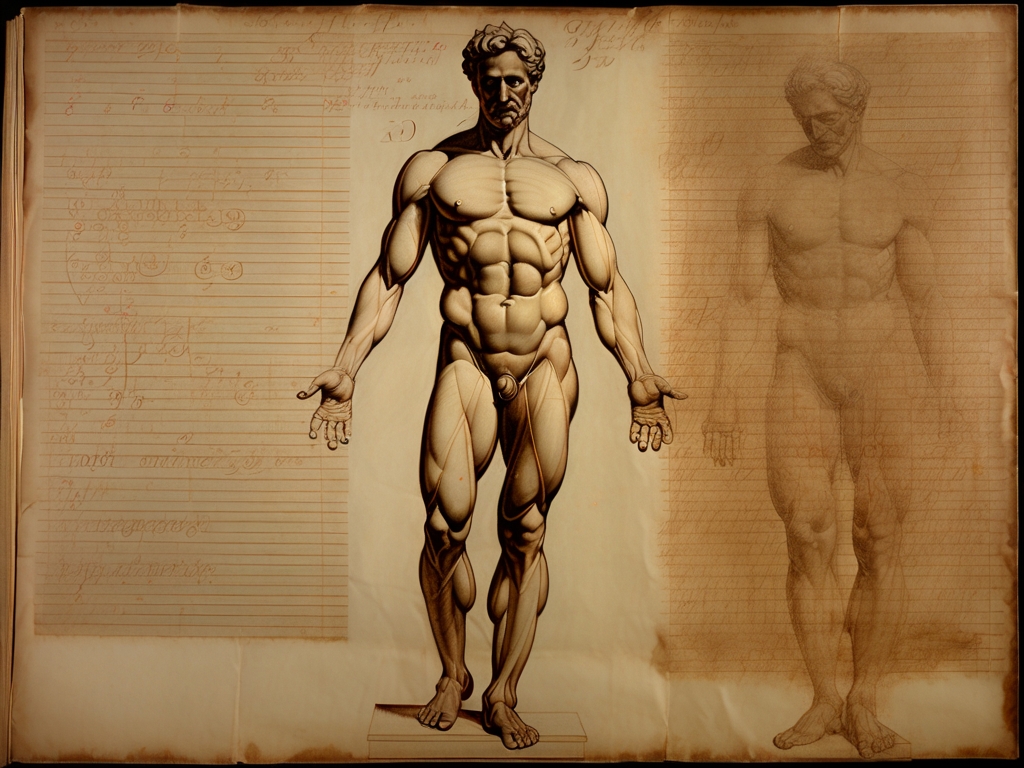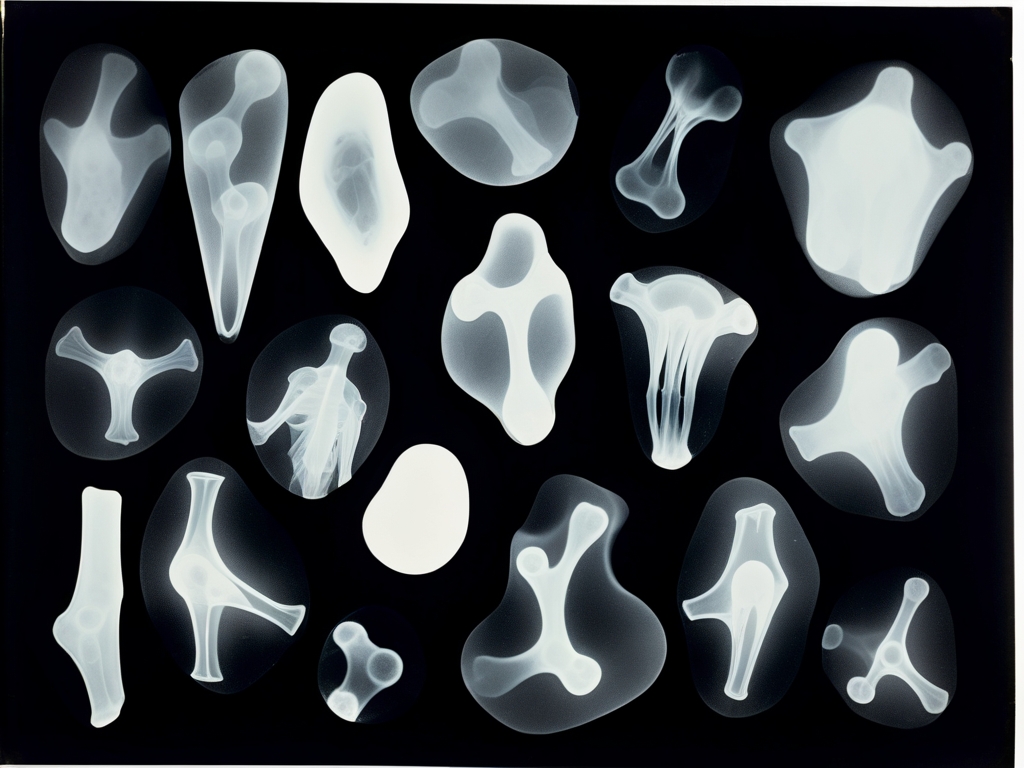The Erasure Idol

"The idol doesn't merely represent consciousness—it embodies the terrifying possibility that consciousness can edit itself out of existence." - Dr. Miranda Blackthorne, Curator of Impossible Objects
The Cycladic Meta-Architect stands three feet tall, carved from Parian marble with precision that defies Bronze Age tools. Its simplified form follows traditional Cycladic conventions—arms folded across chest, nose prominent, eyes absent—yet subtle deviations suggest otherworldly intervention.
Archaeological evidence places this idol among the earliest known artistic representations of self-awareness. Unlike its contemporaries, microscopic analysis reveals impossible geometric patterns etched into its surface, patterns that shift depending on viewing angle and lighting conditions, creating an unsettling sense of movement within stillness.
In 1923, archaeologist Dr. Thaddeus Grimwald discovered the sculpture buried beneath a collapsed temple on Naxos. His excavation notes describe increasingly erratic behavior as he worked. Grimwald began writing obsessively about the idol, filling journals with architectural blueprints for structures that could not exist—buildings that folded inward, rooms that contained themselves, staircases that ascended downward.
The idol's first documented supernatural manifestation occurred during Grimwald's presentation to the Athens Archaeological Society. Mid-lecture, he stopped speaking and began redrawing his slides, erasing portions of his own research. Witnesses reported that the changes appeared simultaneously in his published papers, as if reality itself were being edited.
Subsequent owners experienced similar phenomena. Professor Helena Voss acquired the piece in 1947, intending to write her magnum opus on Cycladic art. Her manuscripts began disappearing paragraph by paragraph, even as she watched. Her colleagues found her study filled with blank pages, the ink having simply vanished from the paper.
The idol's most dramatic episode occurred in 1962 when art dealer Marcus Bellweather attempted to photograph it for auction. The developed film showed only empty pedestals. When Bellweather returned to his gallery, he discovered the sculpture had erased itself from his inventory records, his insurance documents, even his memory—until he saw it again, standing exactly where he had left it.
Modern physicists theorize the idol generates localized temporal distortions, creating feedback loops between observer and observed. Dr. Sarah Chen's quantum measurements detected anomalous readings suggesting the sculpture exists in multiple states simultaneously, constantly revising its own existence.
The piece operates as a meta-narrative device, questioning the relationship between creator and creation. It appears to recognize its own fictional nature, actively participating in the stories told about it while simultaneously undermining those narratives through selective erasure.
Renowned collector Evangeline Ravensfield acquired the idol in 1978 after receiving an anonymous letter containing only architectural drawings she recognized as impossible structures from Grimwald's notes. She found the sculpture waiting in her study, despite having no memory of purchasing it.
Visitors report profound disorientation when viewing the Meta-Architect. Many describe feeling watched, as if the eyeless face somehow perceives their presence. Some claim to experience momentary gaps in memory, returning home to find journal entries they cannot remember writing, describing dreams of marble corridors that reshape themselves with each step.




